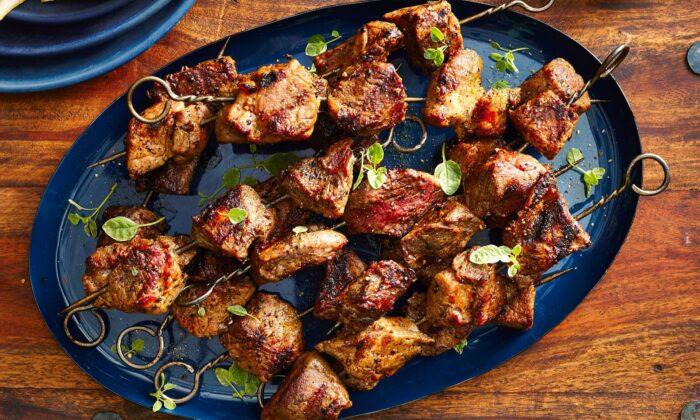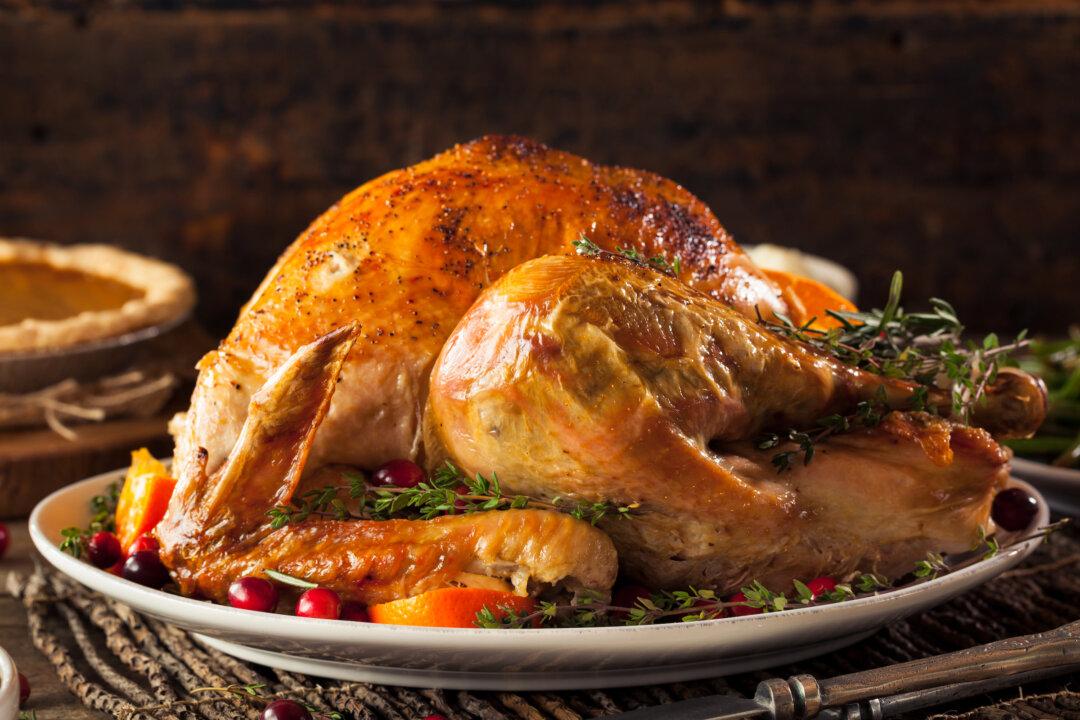How does America grill?
Matt Moore, a Nashville, Tennessee-based food writer, entrepreneur, pilot, and self-proclaimed “serial griller,” traveled 10,000 miles across the country—on the road and in the skies, in his trusty ‘76 Piper Cherokee—to find out.
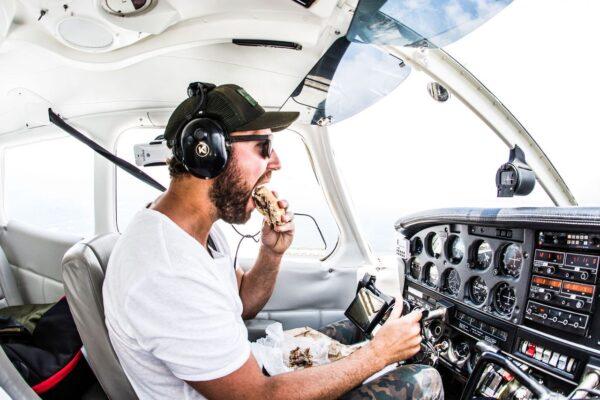
Author Matt Moore in his '76 Piper Cherokee. Andrea Behrends
He started close to home (a 10-minute bike ride away, to be exact) at Greko Greek Street Food in East Nashville, one of his favorite spots. There, the grill yields tender pork and octopus souvlaki and housemade pita, flavors reminiscent of the homeland of the owners, Bill Darsinos and his late cousin Tony Darsinos. Their fathers, Spiros and Evangelos, followed the American dream to Tennessee from Greece in the ‘60s and ‘70s and achieved it, building a successful pizzeria business that remains in the family today.
A generation later, Bill and Tony would open Greko in tribute to their roots.
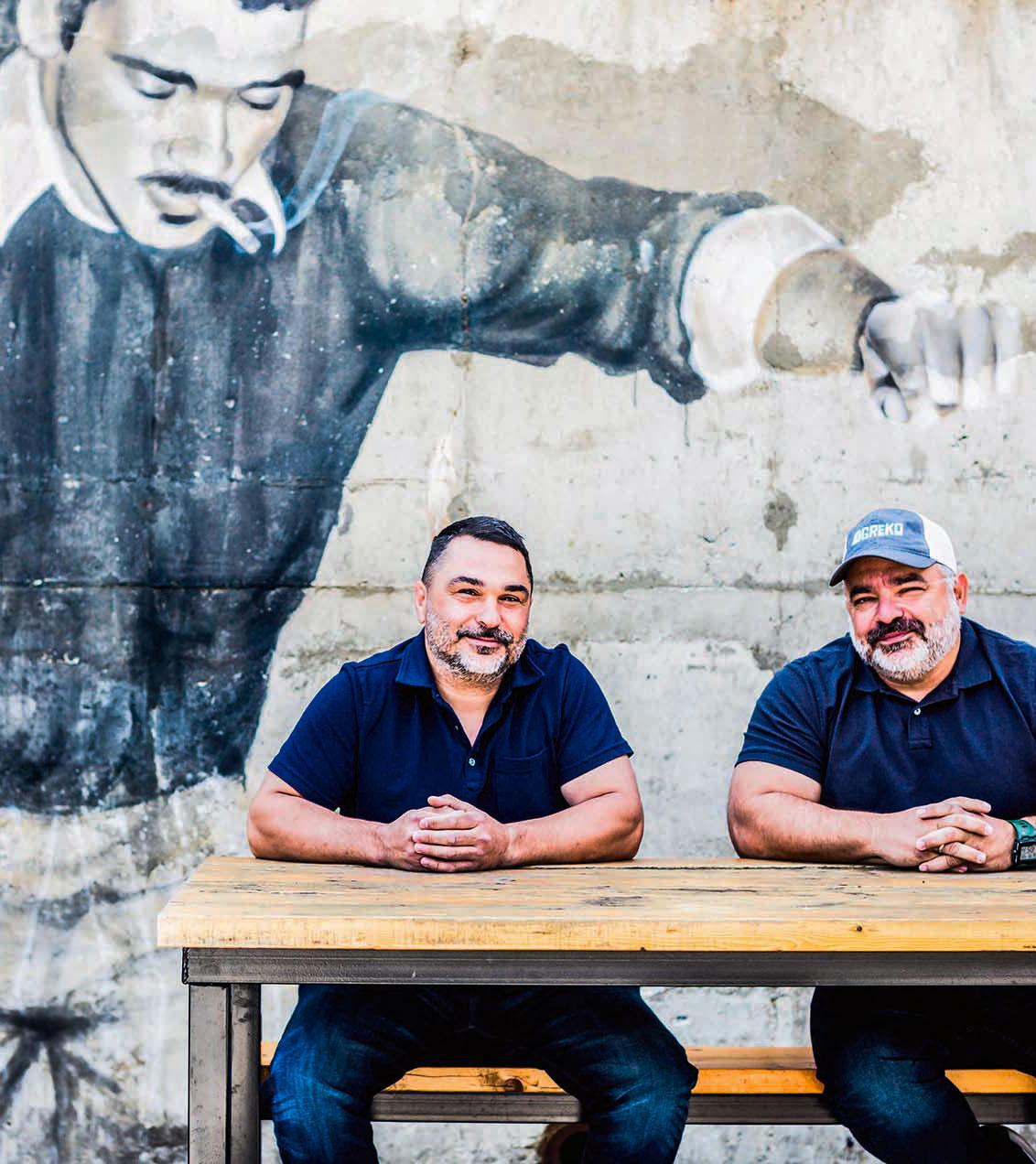
Bill (L) and Tony Darsinos of Greko Greek Street Food in Nashville, Tennessee. Andrea Behrends and Helene Dujardin
Further south, a stop at Marjie’s Grill in New Orleans turned into a two-in-one trip to the Mekong Delta. Co-owners Marcus Jacob and Caitlin Carney, partners in business and in life, apply their love of Southeast Asian cuisines to local Louisiana ingredients, grilling up what Moore considers “the most exciting food in New Orleans”: Cajun-spiced pig tails, Laos-inspired rabbit legs, and Gulf shrimp with a sweet-sour-spicy Thai-style dipping sauce.
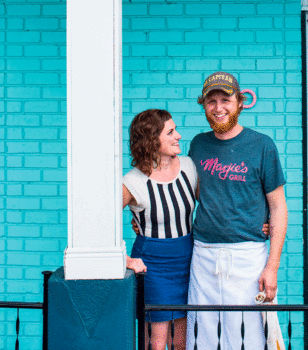
Caitlin Carney and Marcus Jacob of Marjie's Grill in New Orleans, La. Andrea Behrends and Helene Dujardin
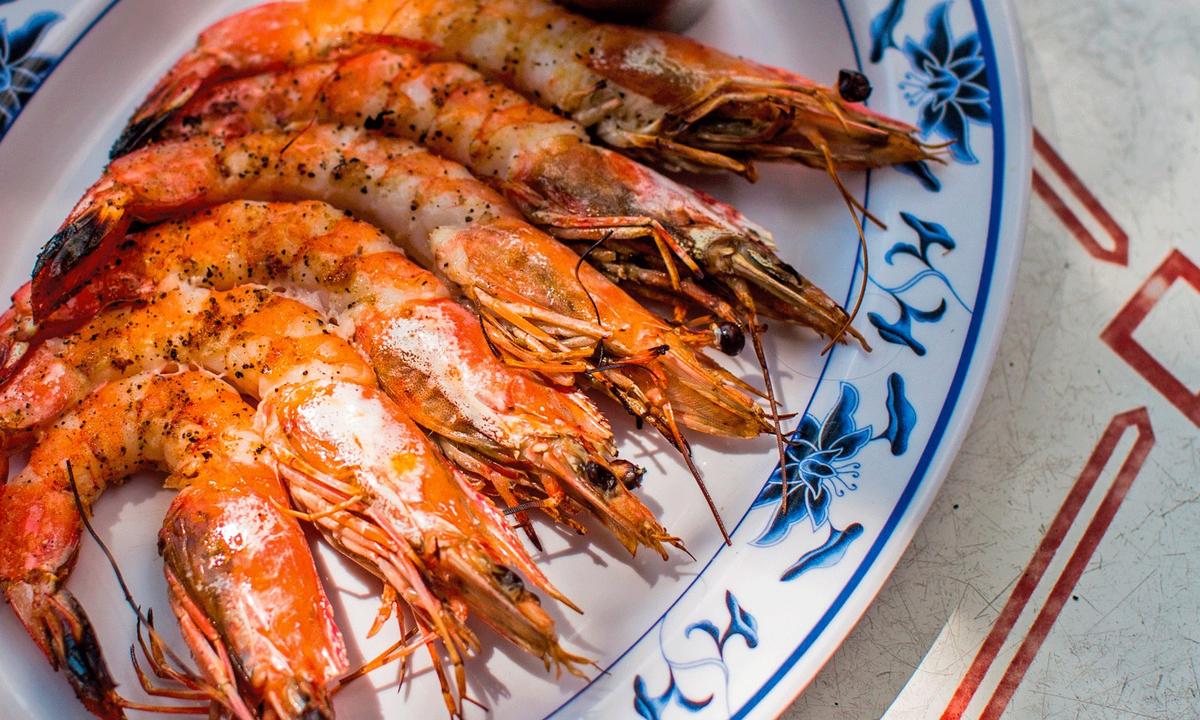
Grilled jumbo Gulf shrimp with nam jim, a sweet-sour-spicy Thai dipping sauce, reflects Caitlin Carney and Marcus Jacob's Mekong Delta-meets-Louisiana culinary sensibilities. Andrea Behrends and Helene Dujardin
Meanwhile, at Hoover’s Grocery in the Mississippi Delta, Moore found simpler fare, but no less rich in heart: spareribs rubbed with garlic powder and Lawry’s seasoned salt, baked beans, and skillet peach cake doctored up from a cake mix.
Using a grill with no easy way to open and close the vents to control the temperature, Sylvester Hoover made do with strategically placed, crumpled pieces of aluminum foil. The son of African American sharecroppers, Hoover runs the Greenwood country store with his wife, Mary, and when they’re not feeding their community, he leads local civil rights and blues history tours.
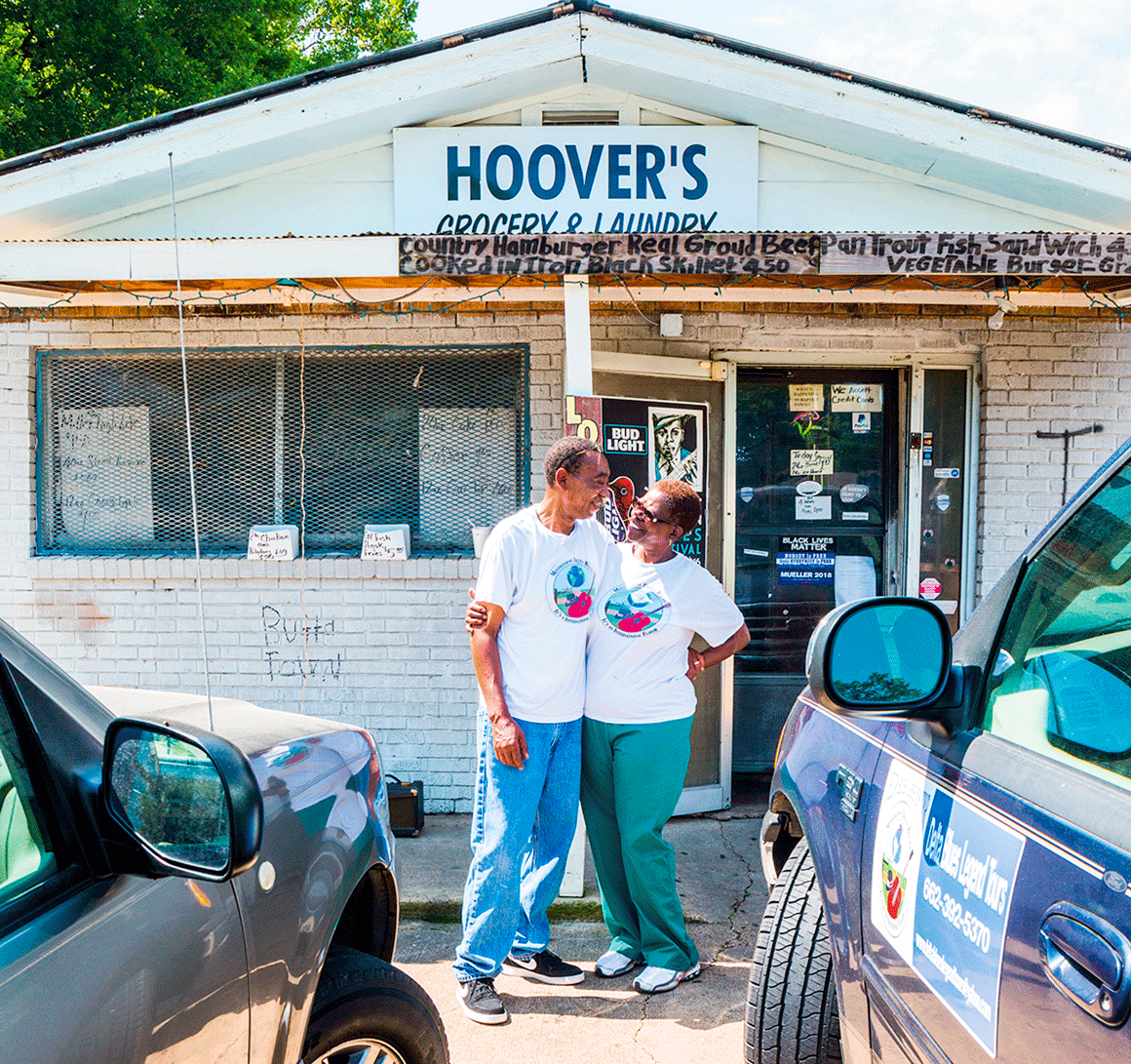
Sylvester and Mary Hoover of Hoover's Grocery in Greenwood, Miss. Andrea Behrends and Helene Dujardin
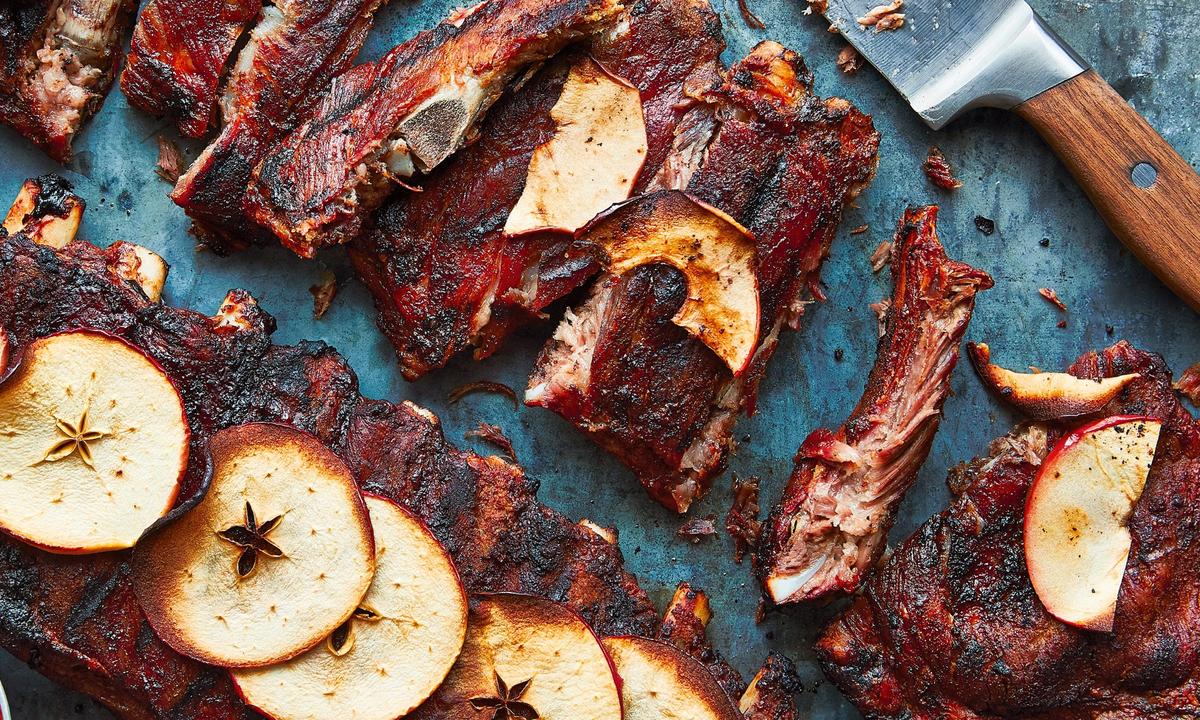
Sylvester Hoover's grilled spareribs are seasoned with garlic powder and Lawry's, finished with sweet apple slices, and served to a tight-knit community. Andrea Behrends and Helene Dujardin
Heading west, to the wide-open Texas plains, brought Moore to chuck wagon cook Jerry Baird, founder of the American Chuck Wagon Association. On the menu were hefty cowboy ribeyes and Dutch-oven yeast rolls, baked in a pile of live oak coals, served with a generous side of Baird’s “cow tales”—“his recipes are good, but his stories are better,” Moore said.
Such are a few of the people, places, and of course, recipes Moore captures in his fourth and latest cookbook, “Serial Griller.” It’s part travelogue, featuring vignettes of the many grillmasters Moore met and learned from, and part personal repertoire, a collection of Moore’s own recipes, for grilling everything from beer brats (his wife is from Wisconsin) to Brussels sprouts to watermelon.
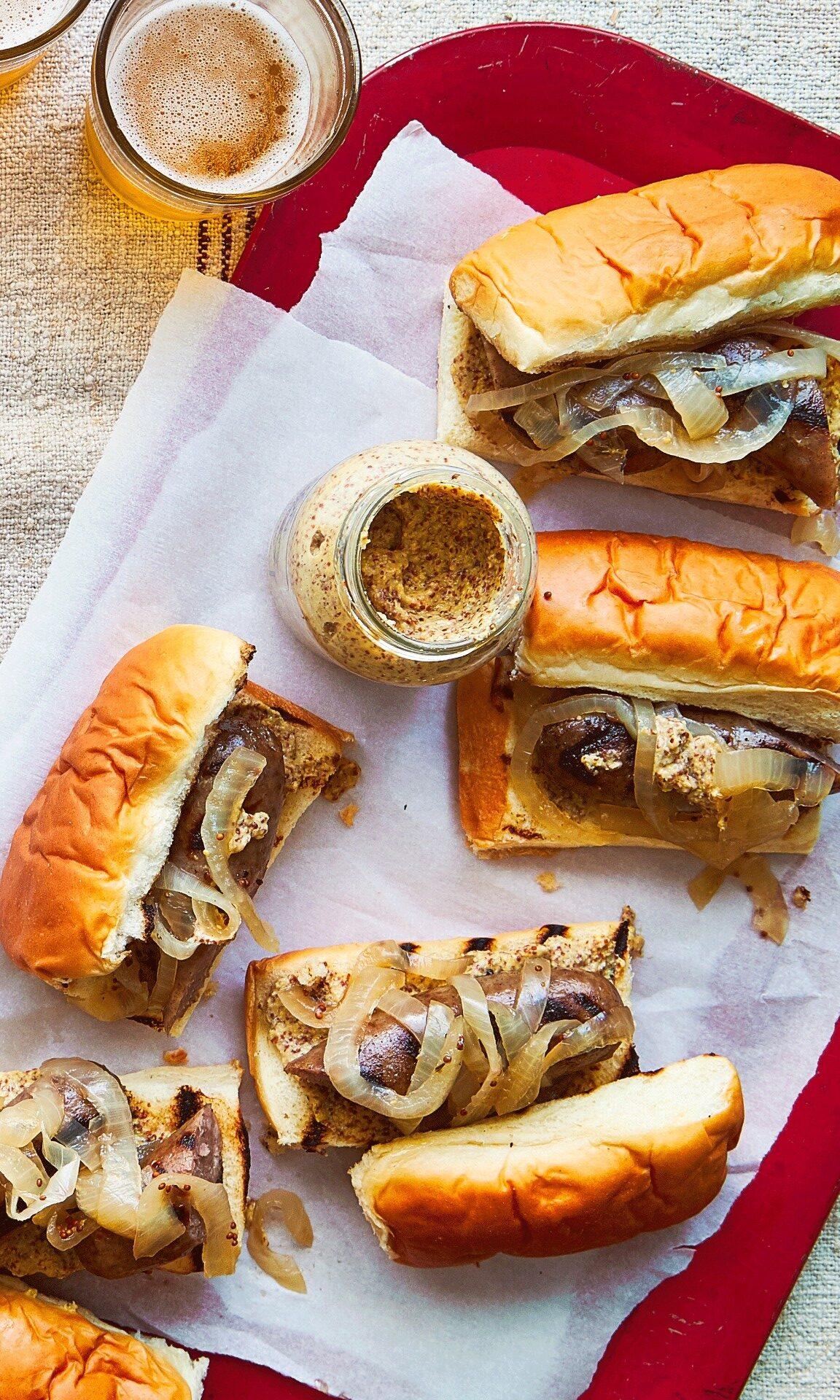
Beer brats, a specialty of Wisconsin—where Matt Moore's wife is from—are first poached in a mix of beer and onions, then finished on the grill over direct heat for a crispy char. Andrea Behrends and Helene Dujardin
It’s all testament to the universal appeal and transformative power of grilling.
“If you look at cuisines across the world, one commonality that everybody shares is making food over a live fire,” Moore said. The comfort and thrill of the fire transcend cultures.
In America, as Moore illustrates, we’re lucky that such a wide range of grilling traditions, from grillmasters of every background, all coexist—“we’re so lucky to live in a country where there is so much diversity,” he said.
“Everybody does so much different in the world of grilling,” he said. “Don’t always be stuck just to one technique, if you’ve always done it a certain way and somebody does it differently. You arrive at different results with different techniques, and that’s OK.”
It’s advice Moore has had to take himself, too, whether he’s arguing with legendary barbecue and grilling expert “Meathead” Goldwyn, another friend and mentor featured in the book (Moore usually loses those arguments, he admits), or acknowledging the convenience and accessibility of gas grilling, despite being firmly in the charcoal camp himself.
At the end of the day, what’s most important to Moore is this: getting “as many people as possible to light a grill.”
Something to Agree on: The Maillard Reaction
Despite all the different ways to grill, Moore points out a unifying factor: “You want browned food, which equals good food.”Behind the rich, dark-brown crust of a perfect ribeye, burger, or charred chicken wing (as well as toasted bread or roasted coffee, among other foods) is a process known as the Maillard reaction. This complex chemical reaction occurs when the natural proteins and sugars in food are exposed to heat, at temperatures upwards of 300 degrees Fahrenheit, producing new and enhanced flavors, aromas, and colors.
“In grilling, we’re always trying to let that Maillard reaction occur,” Moore said. “It doesn’t matter how you arrive; everybody at some point wants it to occur, because that’s what’s creating that grilled flavor that we all crave.”
Grilling Tips
He offered a few tips for making sure it does: Be sure to properly preheat your grill; bring whatever you’re grilling to room temperature and pat it dry before cooking (he even gives watermelon slices a thorough pat-down before throwing them on the grill); and cook in batches instead of overcrowding the grill (which will both bring down the temperature and encourage steaming instead of browning).Finally, forget those picture-perfect cross-hatched grill marks—they might look pretty, but they don’t do much in terms of flavor. Instead, rotate your meat often as it grills, to give it a nice, even char on the outside: “I want every bite to have that same flavor. The more brown, the better.”

"Serial Griller: Grillmaster Secrets for Flame-Cooked Perfection" by Matt Moore (Houghton Mifflin Harcourt, $26.99).

